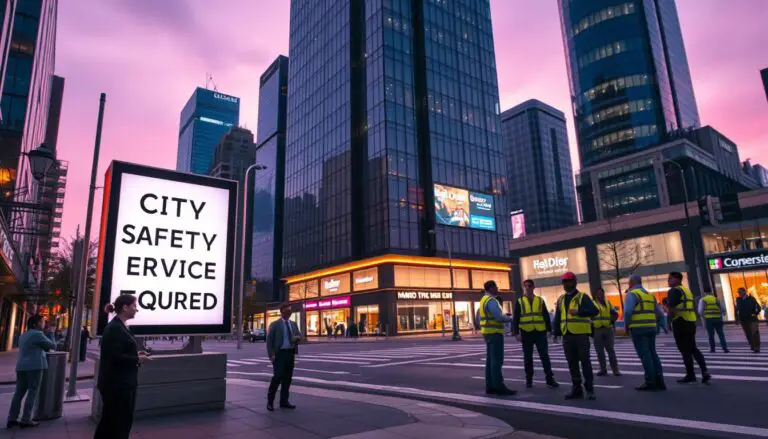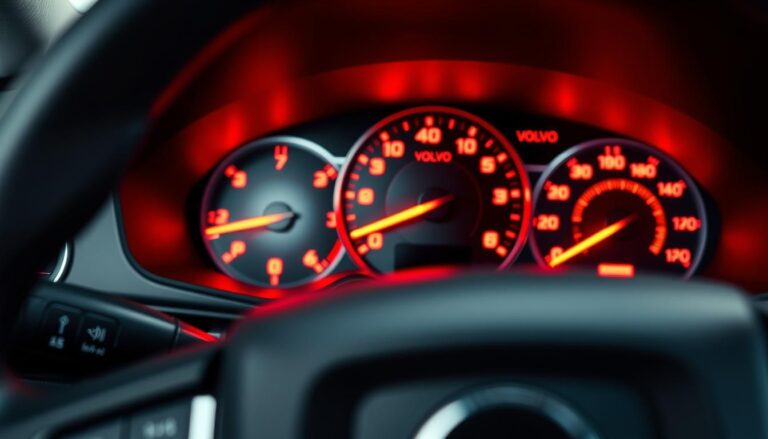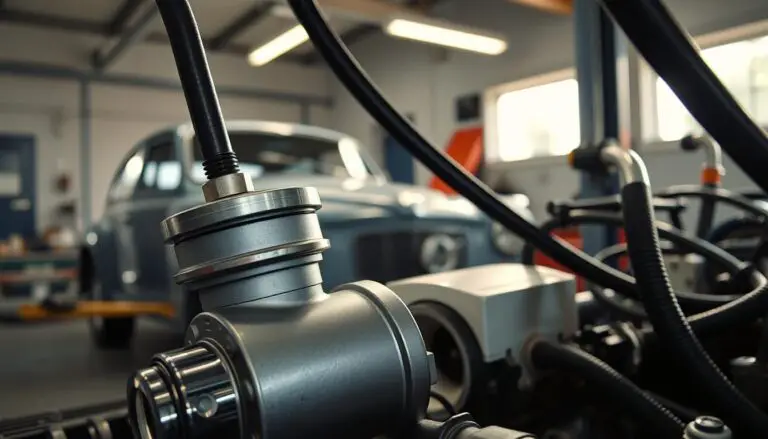When it comes to automotive safety, few brands have built their reputation as thoroughly as Volvo. The Swedish manufacturer has long positioned itself as the safety leader in the automotive industry. But in today’s market where nearly every vehicle boasts a suite of safety technologies, does Volvo still deserve its safety crown?
This comprehensive analysis examines Volvo’s safety legacy, current features, crash test performance, and how they compare to competitors to determine if Volvos truly are the safest cars on the road.
Volvo’s Safety Legacy: Pioneering Innovations That Changed the Industry
Nils Bohlin demonstrating Volvo’s revolutionary three-point seatbelt in 1959
Volvo’s commitment to safety isn’t just marketing—it’s deeply rooted in the company’s history. In 1959, Volvo engineer Nils Bohlin invented the three-point seatbelt, a safety innovation so significant that Volvo made the patent freely available to all manufacturers. This single decision has saved countless lives over the decades.
The company’s pioneering spirit continued with the introduction of the first rear-facing child seat in 1972, recognizing that children require different safety considerations than adults. By 1978, Volvo had developed the booster cushion, another innovation that has become standard across the industry.
Other significant Volvo safety milestones include the Side Impact Protection System (SIPS) in 1991, side-impact airbags in 1994, and the Whiplash Protection System (WHIPS) in 1998. These innovations demonstrate Volvo’s longstanding commitment to protecting not just their customers, but all road users.
“Safety is not about adding features or passing tests. It’s about understanding how real accidents happen and developing technologies that can prevent them or reduce their impact.”
Modern Volvo Safety Features: How They Compare to Competitors
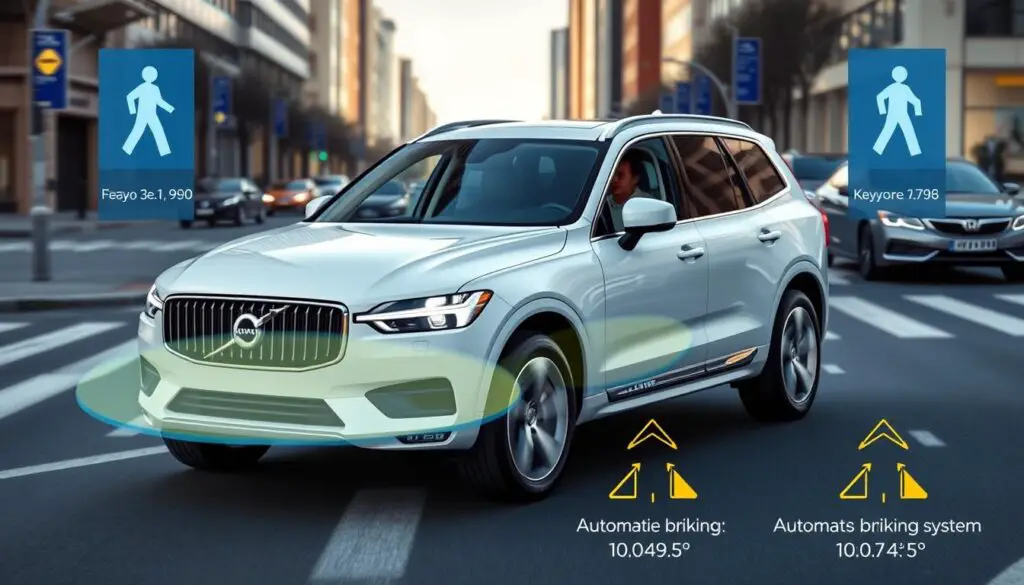
Volvo’s City Safety system detecting and responding to a potential pedestrian collision
Today’s Volvos come equipped with an impressive array of safety technologies. The cornerstone of Volvo’s modern safety approach is City Safety, an advanced automatic braking system that can detect vehicles, pedestrians, cyclists, and large animals. But how does this compare to similar systems from competitors?
| Safety Feature | Volvo | Mercedes-Benz | Tesla | Toyota |
| Automatic Emergency Braking | City Safety (detects vehicles, pedestrians, cyclists, large animals) | Active Brake Assist (similar detection capabilities) | Automatic Emergency Braking (vehicle detection focus) | Pre-Collision System (more basic detection) |
| Lane Keeping Technology | Lane Keeping Aid with steering assistance | Active Lane Keeping Assist | Autosteer (part of Autopilot) | Lane Departure Alert with Steering Assist |
| Semi-Autonomous Driving | Pilot Assist (steering, acceleration, braking) | Drive Pilot | Autopilot/Full Self-Driving | Dynamic Radar Cruise Control (less advanced) |
| Blind Spot Detection | BLIS (Blind Spot Information System) with steering assist | Active Blind Spot Assist | Blind Spot Monitoring (camera-based) | Blind Spot Monitor (basic alert) |
| Cross Traffic Alert | Cross Traffic Alert with auto brake | Exit Warning Function | Limited functionality | Rear Cross Traffic Alert (alert only) |
While competitors offer similar features, Volvo’s systems often include additional capabilities. For example, Volvo’s Pilot Assist provides steering, acceleration, and braking assistance on well-marked roads up to 80 mph, comparable to Tesla’s Autopilot but with a different philosophy focused on driver support rather than autonomy.
Volvo’s BLIS (Blind Spot Information System) goes beyond simple alerts by providing steering assistance to prevent lane changes when vehicles are detected in blind spots. This proactive approach differentiates Volvo from Toyota’s more basic alert systems.
Crash Test Ratings: How Volvo Models Perform
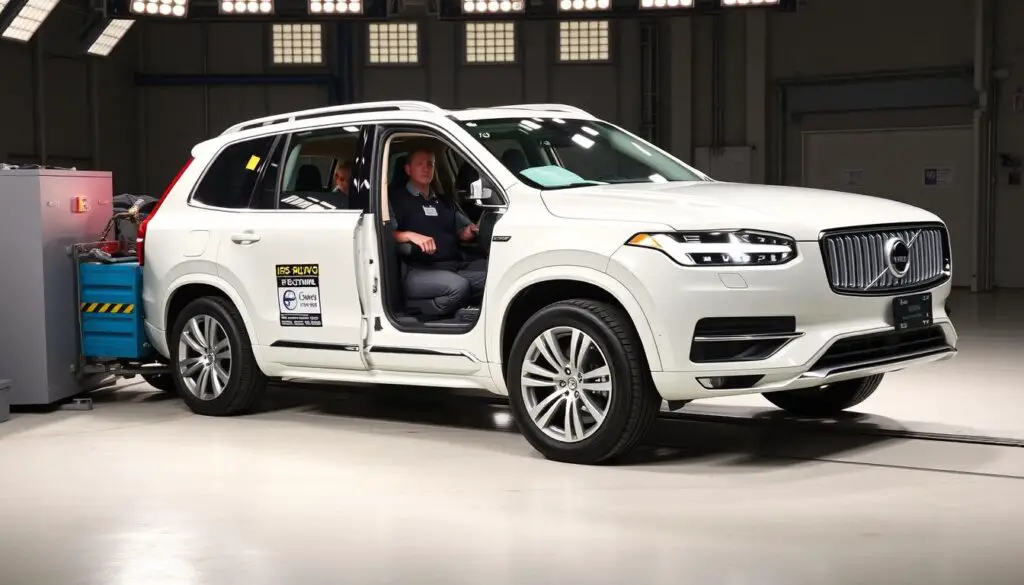
Volvo XC90 undergoing the IIHS small overlap front crash test
Crash test ratings provide objective data about vehicle safety performance. Two primary organizations evaluate vehicle safety in the United States: the Insurance Institute for Highway Safety (IIHS) and the National Highway Traffic Safety Administration (NHTSA).
IIHS Top Safety Pick Awards
The IIHS Top Safety Pick+ is the organization’s highest safety designation. In 2022, Volvo had an impressive showing with 14 models earning the Top Safety Pick+ award. Recent years have seen fewer Volvo models awarded, but this doesn’t necessarily indicate declining safety—rather, it reflects changes in testing criteria and the IIHS evaluating different manufacturer models.
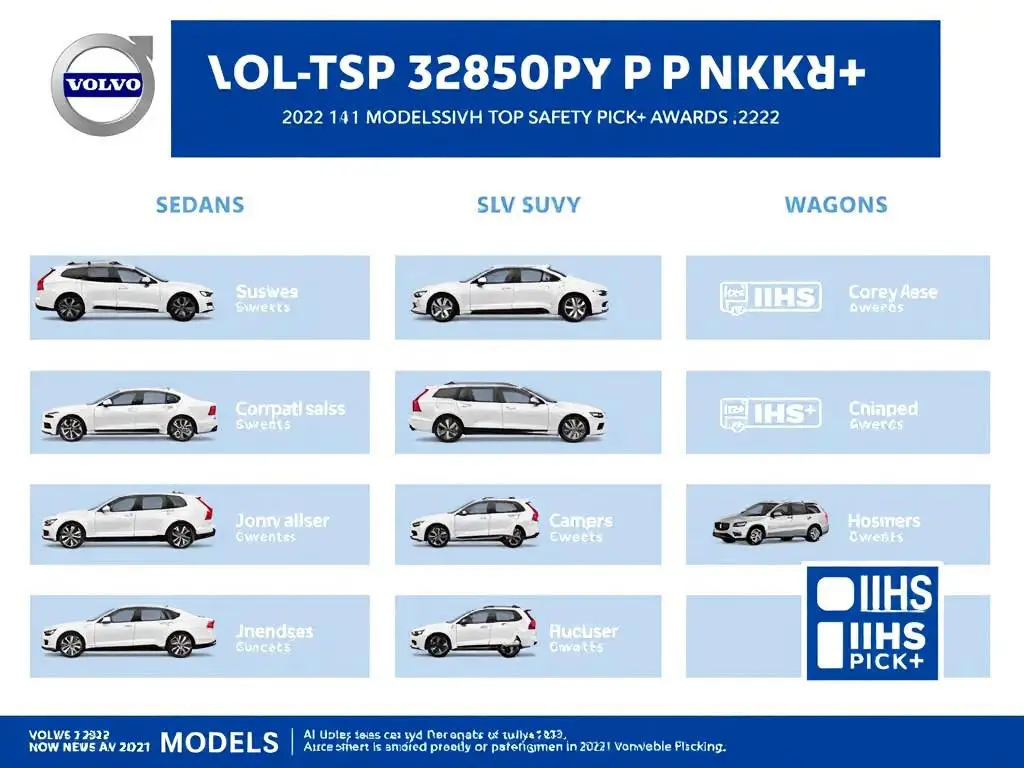
Volvo models receiving IIHS Top Safety Pick+ awards in 2022
Recent Volvo Safety Ratings
The Volvo XC90 and XC60, Volvo’s popular SUV models, continue to receive top safety ratings. The 2024 XC90 earned the IIHS Top Safety Pick+ designation, while the XC60 received the standard Top Safety Pick award. Both models received five-star overall ratings from NHTSA.
The IIHS has increasingly stringent criteria for its safety awards. To earn the 2024 Top Safety Pick+, vehicles needed good ratings in the small overlap front and updated side tests, acceptable or good ratings in the updated moderate overlap front test, and acceptable or good ratings for headlights across all trim levels.
Volvo’s strong performance in these tests demonstrates the effectiveness of their safety cage design, which uses ultra-high-strength boron steel to create a protective cell around occupants.
Addressing Common Criticisms of Volvo Safety

Technician calibrating advanced safety sensors on a Volvo XC60
Despite Volvo’s strong safety reputation, several criticisms are commonly raised. Let’s examine these concerns and their validity.
Volvo Safety Strengths
- Consistently high crash test ratings across model lineup
- Pioneering safety innovations that become industry standards
- Comprehensive standard safety features on all models
- Strong structural integrity using high-strength materials
- Safety philosophy that considers real-world accident scenarios
Common Criticisms
- Higher repair costs for advanced safety systems
- Sensor reliability issues in severe weather conditions
- Safety technology complexity can lead to maintenance challenges
- Premium pricing compared to mainstream brands with good safety
- Occasional false alarms from collision prevention systems
Repair Costs and Sensor Reliability
Advanced safety systems do increase repair costs after accidents. Volvo vehicles feature multiple sensors, cameras, and radar units that require precise calibration. When damaged, these components can be expensive to replace and require specialized technicians.
However, this criticism applies to all modern vehicles with advanced safety features, not just Volvos. As these technologies become more common, repair infrastructure is adapting with more specialized training and equipment.
Value Proposition
Another common criticism is that Volvos command premium prices while mainstream brands now offer similar safety features. While it’s true that the safety gap has narrowed, Volvo often includes as standard what other manufacturers offer as options, and their systems frequently have more advanced capabilities.
“The value of safety isn’t just in having features, but in how well they’re integrated and how effectively they work together as a system. This is where Volvo continues to excel.”
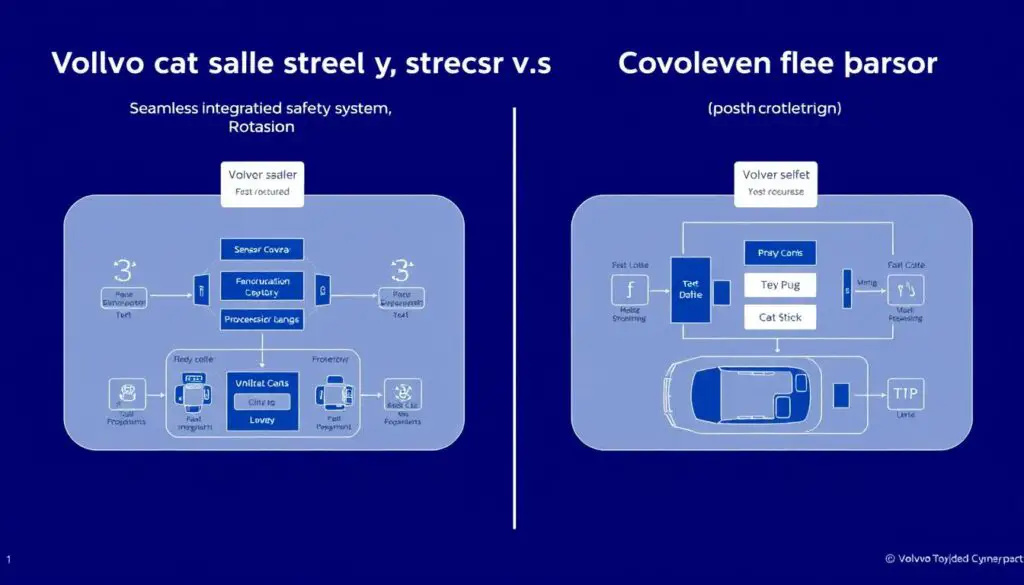
Visualization of how Volvo integrates safety systems compared to some competitors
Expert Perspectives on Volvo Safety

Automotive safety experts discussing the evolution of vehicle safety technology
To gain deeper insight into Volvo’s safety credentials, we consulted with automotive safety experts and examined statements from Volvo engineers.
“Volvo’s approach to safety is holistic—they consider not just crash protection but crash prevention and post-crash response. Their safety center studies real-world accidents to inform design decisions, which is why their innovations often become industry standards.”
“What sets Volvo apart is their willingness to prioritize safety even when it’s not the most profitable decision. The three-point seatbelt patent is the perfect example—they gave it away because they valued lives over exclusive profit.”
Malin Ekholm, head of the Volvo Cars Safety Centre, explains the company’s philosophy: “Our vision is that no one should be killed or seriously injured in a new Volvo car. Safety is about understanding how accidents happen in the real world and developing technologies that can prevent them or reduce their impact.”
This real-world approach is evident in Volvo’s safety testing, which goes beyond regulatory requirements. Their crash test center performs scenarios that aren’t part of standard testing protocols but represent common real-world accidents.
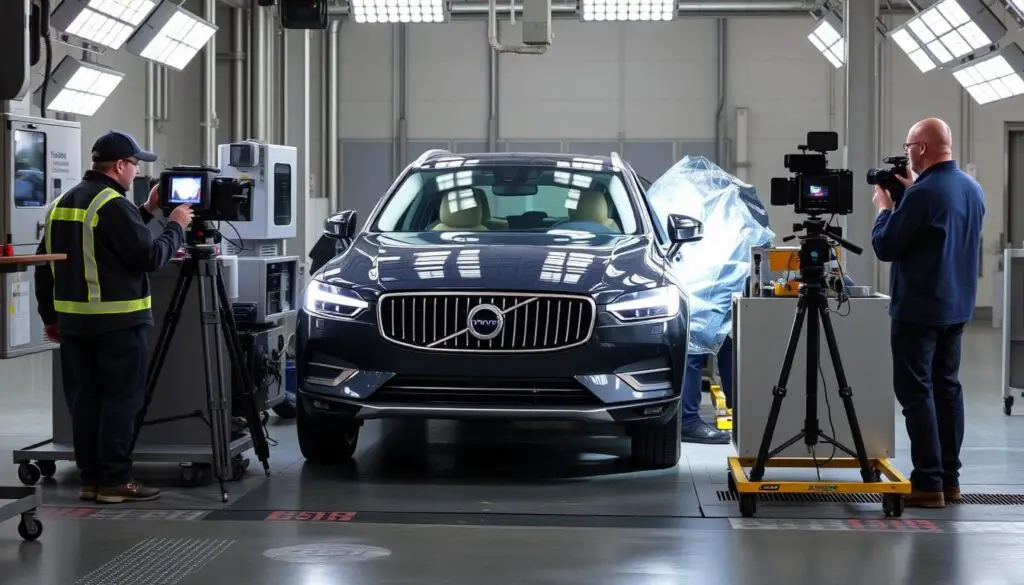
The Future of Volvo Safety: Beyond Crash Testing
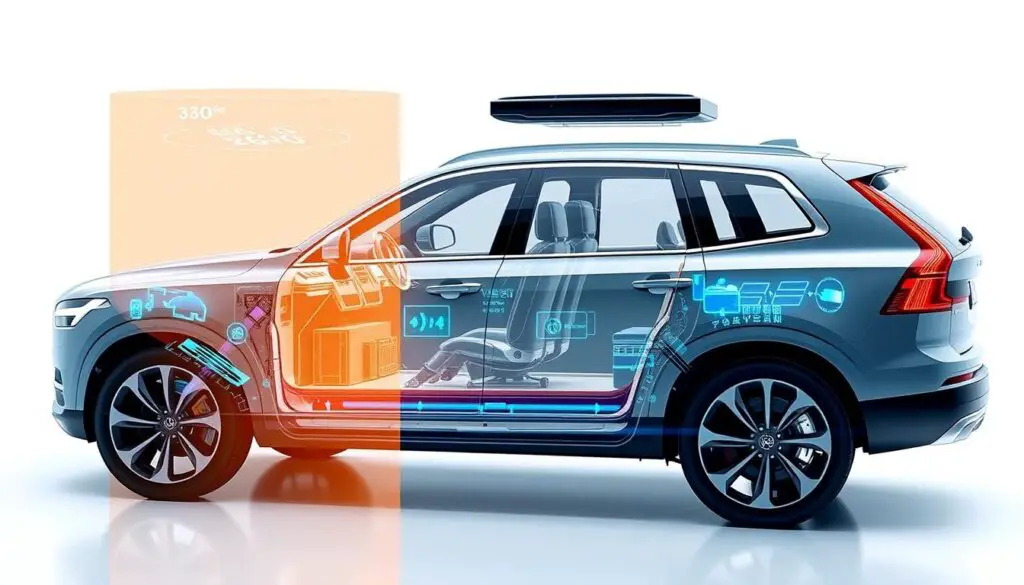
Visualization of Volvo’s next-generation safety technology with LiDAR and AI systems
Volvo continues to push safety innovation forward. The company has announced that all new models will be limited to a top speed of 112 mph—a controversial decision that prioritizes safety over performance. This speed cap is part of Volvo’s broader safety vision.
The new Volvo EX90 electric SUV represents the next evolution in Volvo safety, featuring LiDAR technology that can detect pedestrians up to 250 meters away and a driver understanding system that can detect if the driver is distracted or impaired.
Volvo’s Safety Vision
Volvo’s safety roadmap includes three key areas:
Advanced Driver Assistance
Evolving Pilot Assist toward more comprehensive assistance while maintaining driver engagement and responsibility.
Connected Safety
Vehicles that communicate with each other and infrastructure to anticipate hazards beyond visual range.
Occupant Monitoring
Systems that understand driver state and can intervene if the driver is distracted, impaired, or experiencing a medical emergency.
These innovations reflect Volvo’s understanding that the future of safety isn’t just about surviving crashes—it’s about preventing them entirely through a combination of vehicle intelligence, connectivity, and driver support.
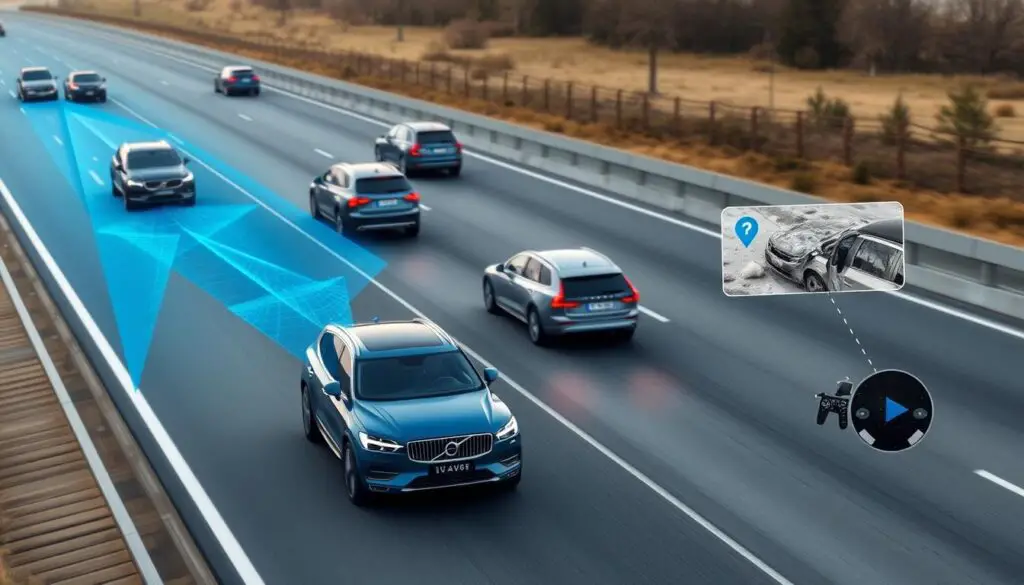
Volvo’s connected safety technology allows vehicles to warn each other about hazards
Conclusion: Are Volvos Really the Safest Cars?
After examining Volvo’s safety legacy, current features, crash test performance, and expert opinions, we can draw some conclusions about whether Volvos truly are the safest cars on the road.
The evidence suggests that Volvo vehicles consistently rank among the safest available, with comprehensive standard safety features, excellent crash test ratings, and innovative safety technologies. While competitors have narrowed the gap in recent years, Volvo maintains advantages in several areas:
- A holistic safety philosophy that considers real-world accident scenarios
- Standard inclusion of features that are optional on many competitor vehicles
- Advanced integration of safety systems that work together effectively
- Continued innovation in areas like occupant monitoring and connected safety
However, “safest” is a complex designation that depends on specific models, comparison points, and how safety is defined. Some competitors may excel in particular safety aspects or offer comparable overall protection.
Advice for Safety-Conscious Car Buyers
If safety is your top priority when purchasing a vehicle, consider these recommendations:
- Look beyond brand reputation to specific model ratings from IIHS and NHTSA
- Consider both crash protection (how the vehicle performs in a crash) and crash prevention (features that help avoid accidents)
- Test drive vehicles to experience safety features firsthand and ensure you’re comfortable with how they operate
- Research the standard safety features included at your price point, not just what’s available as an option
- Consider vehicle size and weight, which often correlate with better protection in crashes with smaller vehicles
Ultimately, Volvo’s commitment to safety remains exceptional, and their vehicles are among the safest choices available. Whether they are definitively “the safest” may be less important than the fact that they consistently prioritize safety innovations that eventually benefit the entire industry—and all road users.
Frequently Asked Questions About Volvo Safety
Which Volvo model has the highest safety rating?
The Volvo XC90 consistently achieves top safety ratings, earning the IIHS Top Safety Pick+ award for 2024 and a 5-star overall rating from NHTSA. The XC60, S60, and V60 models also receive excellent safety ratings across testing organizations.
Are Volvos safer than Tesla vehicles?
Both Volvo and Tesla produce vehicles with excellent safety ratings. Tesla vehicles excel in certain crash tests due to their electric architecture, while Volvos often have more comprehensive standard safety features. The comparison varies by specific model and test criteria, with both brands prioritizing safety in their designs.
What safety features come standard on all Volvo models?
All new Volvo models come standard with City Safety (collision avoidance with automatic braking), Lane Keeping Aid, Road Sign Information, Run-off Road Mitigation, and Oncoming Lane Mitigation. Most models also include Pilot Assist, BLIS (Blind Spot Information System), and Cross Traffic Alert as standard or available features.
How reliable are Volvo’s safety sensors in bad weather?
Volvo’s safety sensors are designed to function in various weather conditions, but extreme conditions can affect performance. The latest models use multiple sensor types (cameras, radar, ultrasonic) to provide redundancy. Volvo’s systems are programmed to alert drivers when sensor functionality is compromised by weather or other factors.
Are Volvos more expensive to repair after an accident?
Volvos can be more expensive to repair after accidents due to their advanced safety systems and sensors that require precise calibration. However, this is increasingly true of all modern vehicles with advanced driver assistance systems. The potential repair costs should be weighed against the enhanced protection these systems provide.

